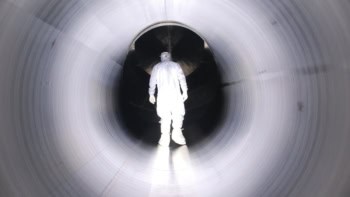An international team of physicists has observed B mesons decaying into pairs of baryons for the first time using the Belle detector at the KEK laboratory in Japan. This result distinguishes between the different models for B meson decay that currently exist (N Gabyshev et al. 2003 Phys. Rev. Lett 90 121802).
B mesons are particles that consist of a “bottom” quark or antiquark plus another lighter quark or antiquark. B mesons have been observed decaying into various combinations of baryons – particles that contain three quarks – and other mesons before, but never into two baryons. The Belle collaboration has now observed B mesons decaying into an antiproton and a lambda baryon, Λc+. This particle contains an up, down and a charmed quark.
There are three currently accepted models for the decay of B mesons into a Λc+ and an antiproton: the diquark, QCD sum rule and pole models. The predictions of the models differ by an order of magnitude and the Belle experiment is able to distinguish between them.
An elementary particle can decay into a certain number of lighter particles. Most particles exhibit several different decay modes, leading to the production of a specific set of particles. The fraction of the time a particle decays via a specific mode is known as the “branching” fraction. The researchers measured this fraction for the decay of the B meson into an antiproton and a Λc+.
The team found a value of approximately 2.19 x 10-5 for the two-body decay of the B meson. This fraction is about an order of magnitude smaller than a three-body decay, which suggests that the ‘pole’ model is correct.



